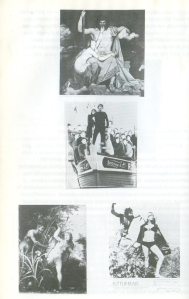“Trust me I’m lying”, by Ryan Holiday, is an overview of the (display) advertisement ecosystem. It explains the trickery used to catch the attention of the viewer-buyer. The author himself writes to be a master of these tricks. He has used them also to catch the attention of large groups of people. The book lays down a simple equation: the writers write, photographers publish pictures and media outlets publish to buy your attention and sell it to advertisers.
“The ways of seeing”, by John Berger, is a different description. It describes the relationship between display advertisement and painting. It characterizes the paintings on which display advertisement takes pictorial and symbolical inspiration.


Why is advertisement credible and successful? John Berger says:
Publicity speaks in the future tense and yet the achievement of this future is endlessly deferred. How then does publicity remain credible – or credible enough to exert the influence it does? It remains credible because the truthfulness of publicity is judged, not by the real fulfillment of its promises, but by the relevance of its fantasies to those of the spectator-buyer. Its essential application is not to reality but to day-dreams.
and
The gap between what publicity actually offers and the future it promises, corresponds with the gap between what the spectator-buyer feels himself to be and what he would like to be. The two gaps become one; and instead of the single gap being bridged by action or lived experience, it is filled with glamorous day-dreams.
all this flourishes in the current social and political environment
The industrial society which has moved towards democracy and then stopped half way is the ideal society for generating such an emotion. The pursuit of individual happiness has been acknowledged as a universal right. Yet the existing social conditions make the individual feel powerless. He lives in the contradiction between what he is and what he would like to be. Either he then becomes fully conscious of the contradiction and its causes, and so joins the political struggle for a full democracy which entails, amongst other things, the overthrow of capitalism; or else he lives, continually subject to an envy which, compounded with his sense of powerlessness, dissolves into recurrent day-dreams.